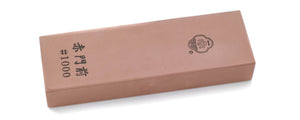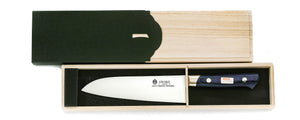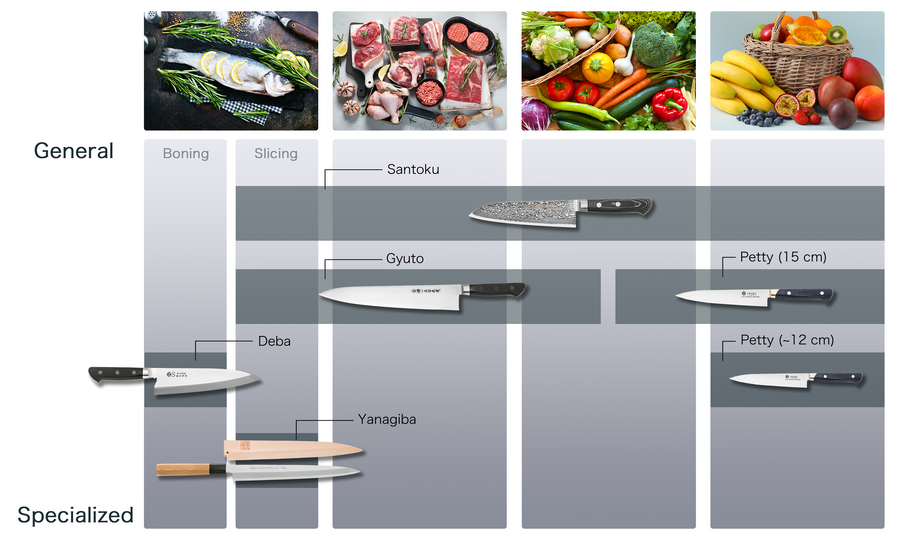
Kiyoshi Series
| Product number | Actual Blade Length (mm) | Full Length (mm) | Total Weight (g) |
|---|---|---|---|
| kiyoshic-210 | 210 | 360 | 180 |
| Blade | Material Name | Handle |
|---|---|---|

Double Edged |
Blue Steel #2 | Oak |

Wa-Gyuto
A Wa-Gyuto Chef's Knife is a French-style chef's knife fitted to a Japanese-style handle, familiar to traditional Japanese chefs. These handles are often Octagonal, D-shaped (Chestnut-type), or Round (Circle-type). Wa-Gyuto knives are all-purpose and made for meat, vegetables, and fish. This makes them a popular choice for chefs in Western restaurants throughout Japan. For preparing meat blocks or cutting cabbage into strips, a 300mm Wa-Gyuto is best. 270mm also works for cooking if the cutting board is large enough. 240mm is popular with professionals, as it handles tasks from preparation to delicate work. 180mm and 210mm are popular for home use, as they cut through large pieces of food without much strain.
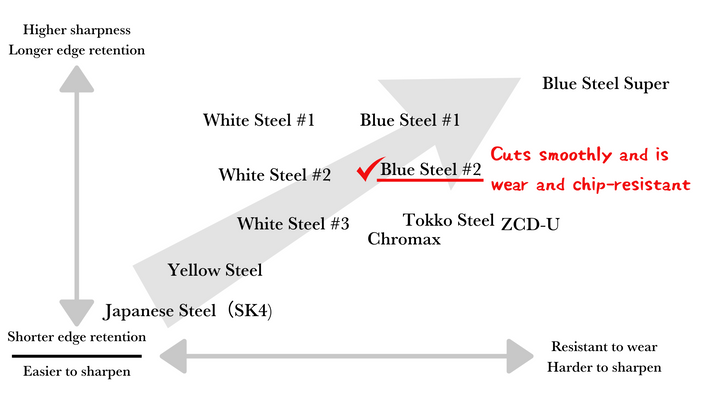
Blue Steel #2
Adding tungsten, chromium, and alloy carbides to White Steel makes for a tough, chip-resistant blade.
Carbon Steel
Blue Steel #2 is made by adding trace amounts of tungsten and alloy carbides (both for hardness), and chromium (for toughness and rust resistance) to White Steel, creating an alloy steel that is very tightly bonded. This also leads to better edge retention compared to White Steel #2, so you can cut better for longer. Professional chefs looking to enter the next level of quality will often choose a Blue Steel #2 knife, but beginners can use this also.
*NOTE: Carbon Steel is susceptible to rust if it is not properly cared for. Please clean and dry the blade regularly during use and after use.
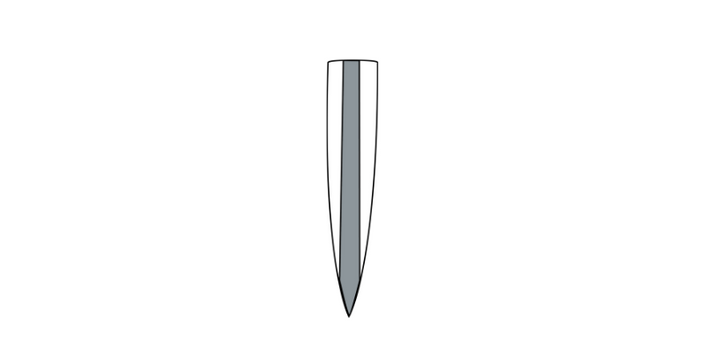
Clad
Forging Process : The cladding method
This method of knifemaking involves forge welding two or more pieces of steel together. The inner core steel is extremely hard, while the outer layer steel is softer and more durable. Most Damascus steel knives available on the market today are made using this method. It allows craftsmen to produce beautiful and well performing blades at a reasonable cost.

Optional Engraving
Optional Engraving Service
Sakai Ichimonji provides complimentary engraving using either Japanese Kanji or English Alphabet. Please specify your preference. For details, please visit here
A knife store that has supported the history of knives and food culture in Japan.
It has been 600 years since the birth of swordmaking in the Sakai region of Japan. Sakai Ichimonji Mitsuhide's and it's craftsmen continue to build on that legacy by producing the finest blades in Japan.
This is where the culture of completing a dish of sashimi by "just cutting" and the culture of expressing sharpness as "taste" was born.
For 70 years, we have been connecting the spirit of Sakai's craftsmen with the passion of chefs in Osaka's kitchen equipment shopping district, known as the kitchen of Japan.
We are very happy that our knives can be used by people all over the world.
Precautions
After use, wash off any dirt and wipe thoroughly with a dry cloth to remove any moisture. This product is not for use with frozen foods.This product is handmade, so each piece will be different. Please use the weight and length listed as a guide. Each material is natural and may vary in color. It is not the same as the picture.We take great care with our inventory, but in the unlikely event that we are out of stock, we will contact you by email to let you know.



























